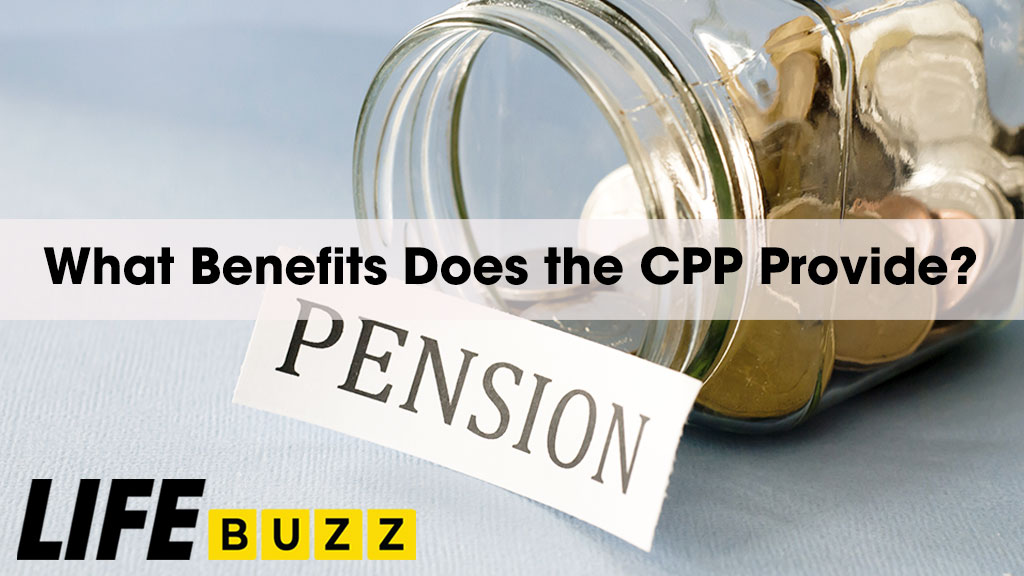The Canada Pension Plan CPP is a cornerstone of retirement planning and financial security for millions of Canadians. By making regular CPP contributions throughout your career based on your income, you gain access to reliable monthly payments and benefits during your senior years.
As one of the three pillars of Canada’s retirement income system, understanding how CPP works is crucial for all working-age individuals.
What is the Canada Pension Plan (CPP)?
The Canada Pension Plan (CPP) is a mandatory social insurance program run by the federal government and is the second pillar of Canada’s retirement income system (the first pillar is OAS and GIS, the third one is private savings).
The CPP works by collecting contributions from virtually all employees, employers, and self-employed Canadians on earnings above a minimum threshold. The only exception is Quebec residents, who contribute to the nearly identical Quebec Pension Plan (QPP) instead. CPP and QPP work closely together to coordinate benefits.
As an earnings-based plan, it aims to replace part of your income when you retire or if you can no longer work due to a severe disability. The CPP also pays benefits to your surviving family members upon your death.

Here is a summary of how CPP functions:
- Mandatory contributions: Both employees and employers must contribute a percentage of the employee’s pensionable earnings each pay period. Contributions begin on your 18th birthday or when you enter the workforce.
- Percentage of income: Contributions are calculated as a percentage of your salary or self-employment income between $3,500 and the Year’s Maximum Pensionable Earnings (YMPE).
- Access to benefits: By contributing to CPP over your working career, you earn future partial income replacement in the form of monthly pensions and benefits. These are available once eligibility criteria are met, often starting from age 60.
- Survivor benefits: Even if you pass away before claiming your own CPP pension, your surviving spouse, common-law partner, and dependent children may qualify for survivor benefits.
- Tracking via SIN: Your annual contributions are carefully tracked using your Social Insurance Number. This determines the benefits you and your survivors may receive one day.
By contributing to CPP throughout your career, you earn future entitlement to monthly payments that aim to replace about 33% of your average lifetime earnings up to certain limits. This reliable source of retirement income is essential for the financial security of most Canadians.
What Benefits Does the CPP Provide?
The Canada Pension Plan aims to support Canadian workers and their families through four main types of monthly benefits:
CPP Death Benefits
A one-time, lump-sum maximum CPP death benefit of $2,500 and a possible top-up of $2,500 help cover final expenses, such as funeral arrangements.
CPP Retirement Pension
The CPP retirement pension is a monthly, taxable payment available for life once you reach age 60. By contributing to CPP while working, you earn entitlement to partial income replacement during your senior years.
Payment amounts vary based on your lifetime contributions, working career earnings, and the age at which you choose to begin receiving your pension. The 2025 maximum CPP payment at age 65 is $1,433.00 per month.
CPP payments are consistently made in the final week of each month, except in December due to seasonal administrative reasons. As you plan for retirement, keep CPP retirement payment dates in mind as you budget your monthly cash flow from pensions, investments, and other income.
CPP Disability Benefits
Canadians unable to work long-term due to a severe and prolonged disability can receive CPP disability benefits beginning around age 18. This includes both the CPP disability pension and additional benefits for dependent children.
Monthly payment rates depend mainly on your contribution history over your past working career. Applications must be approved based on medical eligibility criteria.
CPP Survivor’s Pension
Spouses, common-law partners, and dependent children of deceased CPP contributors can receive financial assistance through the survivor’s pension. It provides a reliable monthly income for surviving widows or widowers, with rates based on the deceased’s payment calculation and the survivor’s age.
CPP Post-Retirement Benefit (PRB)
Those who work while receiving CPP can qualify for Canada Pension Plan post-retirement benefits that further increase their monthly pension amount until age 70.
CPP Benefits for Children under 25
Dependent children of deceased or disabled CPP contributors also qualify for their own monthly CPP children’s benefit until the age of 18 or 25 if attending full-time studies.
The payment rate is fixed monthly regardless of the parent’s income. Eligibility depends on the contributor’s history. This assistance aims to support children whose parent have lost their income.

Who is Eligible for CPP Benefits?
Meeting Canada Pension Plan eligibility criteria is essential to receive monthly CPP payments, such as the retirement pension or disability benefits. Here are the basic requirements:
- Be at least 60 years old
- Have made at least one valid contribution to the CPP
These contributions reflect money from your employment income or credits split from a former spouse upon separation or divorce.
Certain situations impact who you contact about CPP eligibility:
- Quebec: If you only worked in Quebec, contact Retraite Québec about your Quebec Pension Plan eligibility instead.
- Living abroad: If you now live outside Canada, you must use a paper CPP application rather than applying online, even if you previously lived/worked elsewhere in Canada at some point.
- Disability conversion: If you receive CPP disability benefits, these automatically convert to a retirement pension at age 65.
How Much Do You Contribute to the Canada Pension Plan?
Both employees and employers must contribute equally to the Canada Pension Plan (CPP) on annual pensionable earnings. Contribution rates increase gradually each year.
Employee CPP Contributions
For employees, your contribution rate in 2025 is 5.95% of pensionable earnings, matching your employer’s contribution. This percentage applies to employment income between $3,500 and the YMPE of $71,300. The 2025 maximum annual employee and employer contribution is $4,034.10.
So if you earn $50,000 annually, you and your employer would each contribute roughly $2,975 per year toward CPP. Contributions are automatic through employer payroll deductions.
Employer Contributions
Employers must calculate CPP contribution amounts and match 5.95% of an employee’s pensionable earnings in 2024 and beyond. They are required to deduct contributions from each paycheck and remit everything directly to the Canada Revenue Agency on the employee’s behalf. Incorrect calculations, missed deductions, or late remittances can result in penalties for employers.
Self-Employed Contributions
If you are self-employed, you must contribute toward both portions, which amounts to 11.9% of your annual net self-employment income. The 2025 maximum yearly contribution for the self-employed is $8,068.20.
You are responsible for tracking your eligible earnings and calculating how much you owe each year based on your net business revenues. Contributions are remitted as part of your annual tax return.
As of 2019, new CPP enhancement measures also require additional contributions on earnings above the standard yearly maximum to provide more income replacement over time.
Source: Canada.ca. CPP contribution rates, maximums and exemptions
How to Apply for the Canada Pension Plan
Eligible Canadians must formally apply to commence CPP payments. You can submit your CPP pension application through either of the following processes:
- Online Application – Registering via MyService Canada Account enables electronic application filing, with decisions communicated digitally within an average of 2 weeks.
- Paper Application – Downloading and submitting physical CPP retirement forms takes more time, with decisions mailed out in approximately 4 months.
Both channels require the inclusion of personal identification and supporting eligibility documentation, such as proof of legal name, date of birth, banking details, and citizenship or residency status.
You must fulfill the following requirements to have your CPP retirement pension approved:
- Minimum application age – The first allowable date to apply is 12 months before your 60th birthday. The pension start date, however, remains the month after turning 60, provided all criteria are met.
- Maximum processing time – Submitting an application up to 12 months in advance helps ensure sufficient processing time for payment commencement by your preferred start date between the ages of 60 and 70.
- Direct deposit setup – While not strictly required, enrolling in direct deposit simplifies payment logistics through electronic transfers.
Apply within the permissible window to help facilitate on-time benefit access aligned with your chosen pension start date.
When Should You Start Taking CPP: Age 60, 65, or 70?
Deciding when to initiate CPP benefits is a crucial yet complex decision. Eligible seniors must weigh their financial position, risk appetite, tax situation and life expectancy to determine the optimal course.
CPP at Age 65
Age 65 is the standard age to begin receiving full retirement benefits without any early/late adjustments. Delaying benefits beyond 65 increases future payments but requires more savings to bridge the gap. Beginning CPP at 65 balances maximization with practicality. Over half of eligible seniors start their CPP at 65.
CPP at Age 60
Canadians can elect to receive reduced CPP payments at age 60. However, initiating benefits early leads to the following outcomes:
- CPP amounts decrease by 0.6% for each month prior to your 65th birthday. Starting pensions at 60 causes a cumulative 36% decline in monthly income.
- With no ability to delay retirement, some Canadians prioritize short-term cash flow over long-term maximization. Just be aware of the trade-offs involved.
- Those with chronic medical issues negatively impacting longevity may wish to access CPP earlier despite reduced payments.
CPP at Age 70
Canadians who are willing and able to wait until age 70 to collect CPP receive the maximum monthly entitlement. As CPP payments rise by 0.7% per month after 65, delaying 5 years results in a 42% cumulative benefit boost.
Deciding when to apply for CPP requires assessing personal factors, such as retirement budget, supplementary income sources, expected longevity, and risk tolerance. For more information, visit: Government of Canada, When to start your retirement pension.
How is CPP Different from Other Retirement Plans?
While the Canada Pension Plan (CPP) is a major source of retirement income for Canadians, it differs significantly from other popular savings programs.
CPP vs. Registered Retirement Savings Plan (RRSP)
RRSPs complement CPP retirement income through tax-sheltered investment earnings. Controlling your own investments allows for customized retirement planning, but it also carries a higher risk.
| CPP | RRSP |
|---|---|
| Mandatory contributions from employers/employees | Voluntary individual contributions |
| Defined government benefits | Self-directed investment accounts |
| 33% lifetime average earnings replacement | Variable account growth depending on investments |
CPP vs. Old Age Security (OAS)
OAS works alongside CPP to provide a secure baseline retirement income linked to your history as a Canadian resident, while CPP depends specifically on your working career contributions.
| CPP | OAS |
|---|---|
| Based on your contributions and average lifetime earnings | Based on years of Canadian residency (minimum 10 years) |
| Available starting age 60 | Available starting at age 65 |
| Income-tested or clawed back for high earners | Benefits clawed back based on net income over $79,000 |
CPP vs. Quebec Pension Plan (QPP)
The Quebec Pension Plan (QPP) serves the identical role as the Canada Pension Plan (CPP) but has some minor structural and administrative differences:
- Nearly identical benefits and eligibility requirements
- QPP has a slightly higher maximum contribution (10.8% in 2025).
- QPP offers more flexibility to combine retirement income and work income for ages 60-65.
- QPP is administered by Retraite Québec rather than the federal CPP program. Funds are managed by Caisse de dépôt et placement du Québec.
- Contributions are transferable between QPP and CPP when coordinating benefits.
Quebec residents with any work history in the province pay into QPP instead of CPP, but enjoy very comparable retirement pensions and protections.
FAQs about the CPP Canada Pension Plan
Are CPP benefits considered taxable income?
Yes, recipients must report their total CPP benefits each year on their Canadian tax return, whether retirement pensions, survivor benefits, or disability payments. All CPP income is considered taxable by the Canada Revenue Agency (CRA).
Can I receive the CPP if I live abroad?
If you live overseas but previously worked and contributed to CPP, you may still qualify for CPP benefits, including retirement payments. However, you cannot apply online and must contact Service Canada to have a paper application mailed to you instead.
What happens if I pass away before ever claiming CPP?
If you die before ever applying for CPP - even after age 70 - payments cannot be issued to your survivors retroactively. However, your surviving spouse, partner, or children may still qualify separately for CPP survivor benefits based on your work history and contributions.
How do I verify my CPP contributions to date?
You can confirm your accurate CPP contribution history at any time by accessing your personalized Statement of CPP Contributions available through My Service Canada Account. Review it regularly to ensure your earnings record is correct.
Summary
The Canada Pension Plan offers Canadian employees, employers and self-employed individuals a reliable source of retirement income in their later years. Mandatory CPP contributions also provide benefits for disability, death, and survivors’ pensions – crucial financial protections at various stages of life.
Understanding precisely how CPP works, its key benefits packages, what it costs in contributions, when you can start payments, and how it differs from other programs allows Canadians to maximize their retirement planning.


